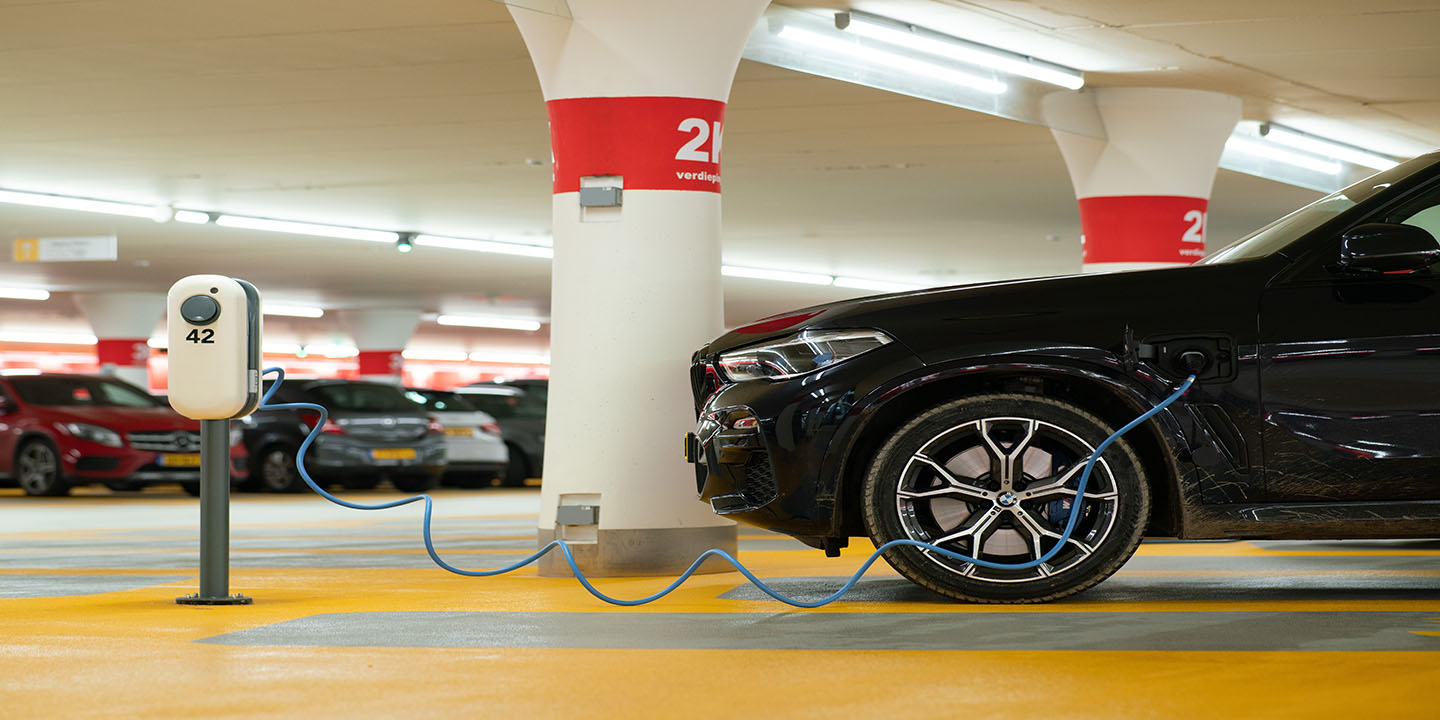10 Car Safety Features That Actually Work & 10 That Are Gimmicks
Safety Features Put To The Test
There's nothing car companies love more than heralding their brand-new slate of safety features. While some really do make driving safer, others often feel more like marketing tricks than genuine protection. Most times, drivers can’t even tell the difference until they’ve tried them out or read the fine print. Looking closer at these features reveals which ones truly help and which just sound impressive. First, let’s check out 10 safety features that actually prove their worth on the road.
1. Anti-lock Braking System (ABS)
Before ABS, slamming the brakes often meant losing steering control. The new technology fixed that by releasing and reapplying brake pressure in milliseconds. Its effectiveness eventually turned optional equipment into a legal mandate for every new car sold today across the US and Europe.
 Pemansi at Finnish Wikipedia on Wikimedia
Pemansi at Finnish Wikipedia on Wikimedia
2. Frontal Airbags
First launched in the 1970s but rarely seen for years, airbags gained real momentum in the 1990s. Today, they remain a primary defense in severe crashes by protecting drivers and passengers when speed and impact leave no time for thought.
3. Electronic Stability Control (ESC)
Drivers often never notice when ESC steps in. It quietly stabilizes a car by braking one or more wheels and stops slides before they become disasters. Widespread success convinced lawmakers to make it mandatory on all new models beginning in 2012.
4. Three-Point Seat Belts
Volvo engineer Nils Bohlin’s 1959 design still protects millions daily. Three-point seat belts, which secure both the upper and lower parts of the body, lower the chance of fatal injuries for front-seat passengers by 45%. Volvo even shared the patent freely, which accelerated adoption worldwide and cemented the belt as the first line of defense in any crash.
5. Automatic Emergency Braking (AEB)
Some vehicles now stop themselves before the driver even realizes a threat exists. This works best in clear conditions, but nighttime roads and storms reduce reliability. Despite that, automatic braking continues to rank high among features that protect lives.
 Nissan’s Automatic Emergency Braking and Radar System (rear) by NikoVR
Nissan’s Automatic Emergency Braking and Radar System (rear) by NikoVR
6. Blind Spot Monitoring
Sensors hidden in the rear quarter panels peek where mirrors can’t. They alert you to vehicles hiding just out of view and significantly cut lane-change collisions. Once a luxury-car perk, this feature now appears in many entry-level models, proving its worth across budgets.
7. Rearview Backup Camera
A camera lens on the tailgate changed how people reverse. Standardized in US cars since 2018, it’s dramatically reduced backover incidents, especially involving kids and pets. Some systems even stitch multiple cameras into a 360-degree display and give drivers a top-down view that was reserved for video games.
8. Lane Departure Warning
This feature steps in when focus slips. It detects unintentional drifting and sounds or vibrates an alert, which reduces single-vehicle road departures. Paired with lane-keeping assist in some models, it adds a subtle but powerful safety net on highways and long drives.
 Toyota Safety Sense ™ Lane Departure Alert (LDA) Settings and Controls | Toyota by Toyota USA
Toyota Safety Sense ™ Lane Departure Alert (LDA) Settings and Controls | Toyota by Toyota USA
9. Rear Cross-Traffic Alert
Backing out of crowded parking spaces feels less like guesswork, thanks to this feature. Using radar or ultrasonic sensors, it spots cars crossing behind you and can even brake automatically if needed. It’s a quiet hero in shopping centers and urban streets.
 2020 Mazda CX-5 | Rear Cross Traffic Alert | Smail Mazda by Smail Mazda
2020 Mazda CX-5 | Rear Cross Traffic Alert | Smail Mazda by Smail Mazda
10. Tire Pressure Monitoring System (TPMS)
A small dashboard icon can save your tires—and maybe your life. TPMS warns of dangerously low pressure, which lowers blowout risk and boosts fuel efficiency. Mandated for new US vehicles since 2007, newer versions even show the exact pressure per tire for easy maintenance.
 Flashing TPMS Light On Dash - Check Tyre Pressure Monitoring System - Hyundai by Gerard Burke
Flashing TPMS Light On Dash - Check Tyre Pressure Monitoring System - Hyundai by Gerard Burke
We’ve seen what actually keeps drivers safe, so now let’s reveal the features that don’t live up to the marketing.
1. Lane-Centering Assist
Lane-centering assist promises to keep your vehicle perfectly aligned, though faded lines and sharp curves often confuse the system. Drivers must stay engaged, which diminishes the “hands-off” appeal. Its effectiveness depends more on conditions than technology, making it less revolutionary than advertised.
2. Automated Parking Assist
Drivers drawn to automated parking expect reliable help in crowded lots. What they often encounter is a system that occasionally stalls or demands intervention. The convenience exists, yet manual control usually proves more efficient.
 2024 BMW 7 SERIES Automated Parking Demonstration by YOUCAR
2024 BMW 7 SERIES Automated Parking Demonstration by YOUCAR
3. Remote Parking
Remote parking allows you to control a car from outside, which sounds futuristic. In practice, low speeds and close supervision are required, which limits its usefulness. Walking alongside your vehicle often takes longer than simply steering it manually.
4. Overspeed Alerts
Overspeed alerts notify drivers when limits are exceeded. They can activate unexpectedly due to temporary speed zones or GPS errors. While intended to improve safety, constant notifications can become distracting and draw attention away from the road instead of enhancing it.
 Speed Alert Pro VIDEO demonstration by SafeSpeed Guy
Speed Alert Pro VIDEO demonstration by SafeSpeed Guy
5. Traffic Sign Recognition
With cameras on board, this system brings speed limits and stop signs to the dashboard. Harsh weather or hidden signs often confuse it. Used as a companion to careful driving, it adds value without taking over responsibility.
 Audi Tech Tutorial: Traffic Sign Recognition by Audi USA
Audi Tech Tutorial: Traffic Sign Recognition by Audi USA
6. Hands-Free Cellphone Devices
Voice-controlled calls eliminate manual phone handling, but cognitive distraction remains. Drivers may react more slowly to sudden hazards, which proves that “hands-free” does not mean risk-free. The feature offers convenience rather than a measurable improvement in attention.
 Bluetooth Wireless Car FM Transmitter Charger with Handsfree Phone Calling Review by Peter von Panda
Bluetooth Wireless Car FM Transmitter Charger with Handsfree Phone Calling Review by Peter von Panda
7. Traffic Light Assist
Engineers designed the traffic light assist to cut unnecessary stops and wasted fuel. Yet without widespread installation of smart signals, the system rarely shines. Its success depends heavily on where you drive and how advanced the local network is.
 New car with Traffic Light detection by David Cretul
New car with Traffic Light detection by David Cretul
8. Semi-Autonomous Driving Modes
Semi-autonomous modes combine lane-centering and adaptive cruise control. Drivers are still required to monitor constantly and intervene immediately. The system creates a false sense of freedom, highlighting supervision over genuine autonomy.
 F150 Self Driving Hack by Bob Eveleth
F150 Self Driving Hack by Bob Eveleth
9. Gesture Control Systems
Automakers push gesture controls as the future of car interaction. Reality tells a different story when misread motions launch the wrong command. The convenience vanishes and leads drivers back to the familiar feel of physical controls they can trust.
 Get the most out of gesture control – BMW How-To by BMW
Get the most out of gesture control – BMW How-To by BMW
10. Driver Attention Cameras
Cameras that track eyes and head movement sound advanced, though the real value feels questionable. Mistaken alerts interrupt the drive, and privacy concerns add frustration. For many users, the feature fades into the background without making a meaningful difference.















